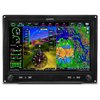AggieMike88
Touchdown! Greaser!
- Joined
- Jan 13, 2010
- Messages
- 20,804
- Location
- Denton, TX
- Display Name
Display name:
The original "I don't know it all" of aviation.
Both of today’s flight with student JJ were some good IFR teaching flights with him…. His first flights back under the hood since his private pilot checkride.
Once in the practice area, he quickly adopted good scan habits.
Looking at the Cloud Ahoy Debrief I discovered something…
Wind conditions were 30014G19. We were departing RWY 36R at KDTO.
I gave him the instruction “On Departure, Fly Runway Heading”. Take off good, climb good, he remained well within ±5º heading. But looking at the ground track in Cloud Ahoy, we drifted pretty far to the right. So much that if there was a parallel runway to our right, we would might have been over too far. (click thumbnail below to see full image)
If we were flying VFR, we would notice that some amount of crab into the wind is needed and do it.
Using our tools on the G3X, what is the simple way when under the hood to “cancel” this drift and track runway heading properly?
Do we twist the heading bug into the wind some amount?
Or is there some other technique that works every time?
For additional data, both the Flight Director and autopilot were off.

Once in the practice area, he quickly adopted good scan habits.
Looking at the Cloud Ahoy Debrief I discovered something…
Wind conditions were 30014G19. We were departing RWY 36R at KDTO.
I gave him the instruction “On Departure, Fly Runway Heading”. Take off good, climb good, he remained well within ±5º heading. But looking at the ground track in Cloud Ahoy, we drifted pretty far to the right. So much that if there was a parallel runway to our right, we would might have been over too far. (click thumbnail below to see full image)
If we were flying VFR, we would notice that some amount of crab into the wind is needed and do it.
Using our tools on the G3X, what is the simple way when under the hood to “cancel” this drift and track runway heading properly?
Do we twist the heading bug into the wind some amount?
Or is there some other technique that works every time?
For additional data, both the Flight Director and autopilot were off.



